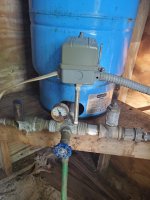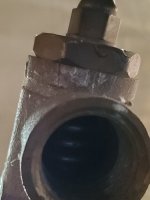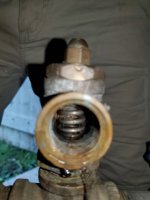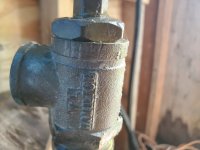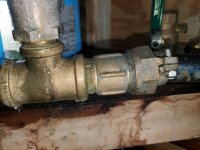buckyswider
Member
So now that the well is working, there is a small leak. Not a huge deal, since it's an outdoor well, but would like to get it repaired. It's in the location where one is supposed to (based on my 10 minutes of research!) find a check valve, but it more looks like a PRV, based on the spring, outlet, and adjustment bolt. But I can't find anything matching it on any PRV search (nor even any PRV with a female connection). In the pic, the flow is from right to left- that plastic pipe connecting to the mystery valve is directly from the pump side. Any clues? Thanks!

